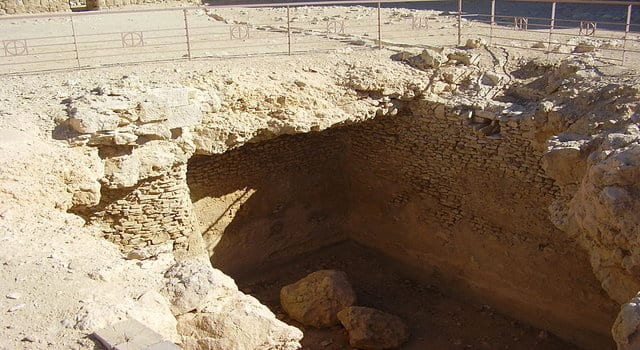Last week, Jews around the world observed the fast of the seventeenth of Tammuz, commemorating (among other tragedies) the breach of the walls of Jerusalem preceding the destruction of the Second Temple. Now, the Israel Antiquities Authority has announced that it has found evidence of the era of the siege on Jerusalem.

During excavations of the area of Robinson’s Arch, a portion of the Western Wall, a cistern was exposed. Inside the cistern, three cooking pots and a small ceramic oil lamp, all intact, were found. The pieces date to the first century CE and were found in the drainage tunnel of the cistern. These artefacts are the first evidence in support of Josephus’s account of the time of the siege.
In the year 66 CE, after nearly 130 years of abusive Roman rule, many Jews opted to join the rebellion against their tyrannical oppressors. A small group of zealots had been fighting for many years, but after Roman procurator Florus stole from the Temple, many others joined their cause and they succeeded in ousting the Romans from Jerusalem. The Romans responded with a brutal show of force, and the various rebel forces spread throughout the country were pushed back to Jerusalem. There, disagreements about how to proceed led to infighting and outright civil war. Stores of food were destroyed by rebels in order to force residents to join the rebellion. When the Romans laid siege to the city, the starvation caused as much suffering as any Roman brutality to date.
Josephus records the events of the war and the suffering of Jerusalem residents in his book The Jewish War. According to his account, those who had food hid it from their neighbours. In his words, “..men broke into the houses and ransacked them. If they found some [corn], they maltreated the occupants for saying there was none; if they did not, they suspected them of having hidden it more carefully and tortured them.
[box type=”shadow” ]Interested in the latest archaeological discoveries from the temple period? Read about the recent discovery of an ancient Roman road in the Beit Hanina neighbourhood of Jerusalem. [/box]
“Many secretly exchanged their possessions for one measure of corn-wheat if they happened to be rich, barley if they were poor. They shut themselves up in the darkest corners of the their houses, where some through extreme hunger ate their grain as it was, others made bread, necessity and fear being their only guides. Nowhere was a table laid…” (Josephus The Jewish War. Translated by G.A. Williamson 1959. P. 290).
Eli Shukron, excavation director on behalf of the Israel Antiquities Authority, said, “This is the first time we are able to connect archaeological finds with the famine that occurred during the siege of Jerusalem at the time of the Great Revolt. The complete cooking pots and ceramic oil lamp indicate that the people went down into the cistern where they secretly ate the food that was contained in the pots, without anyone seeing them, and this is consistent with the account provided by Josephus.”



